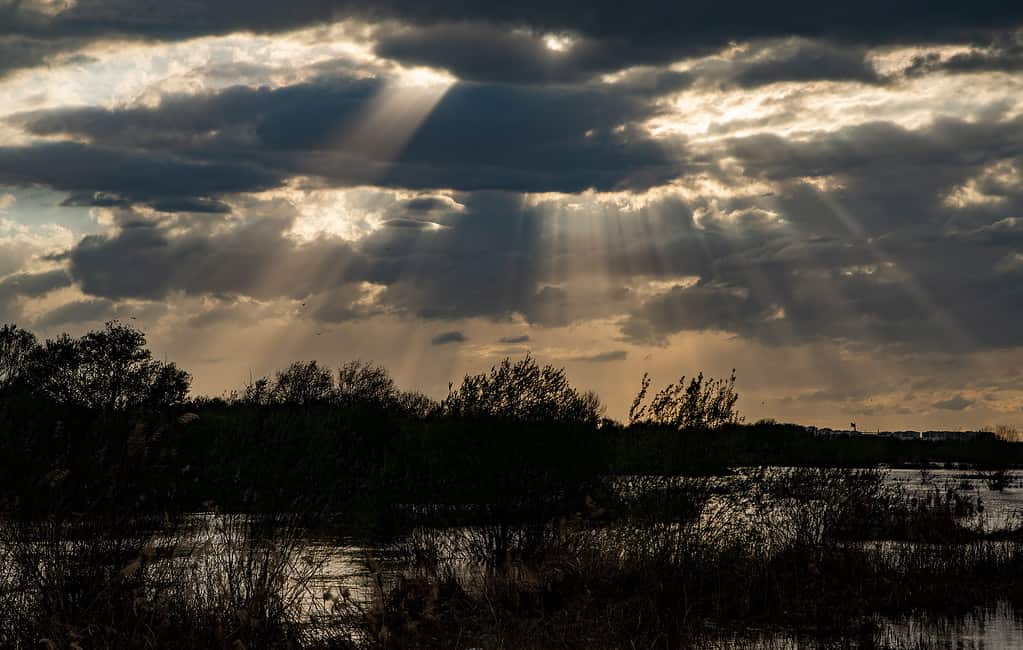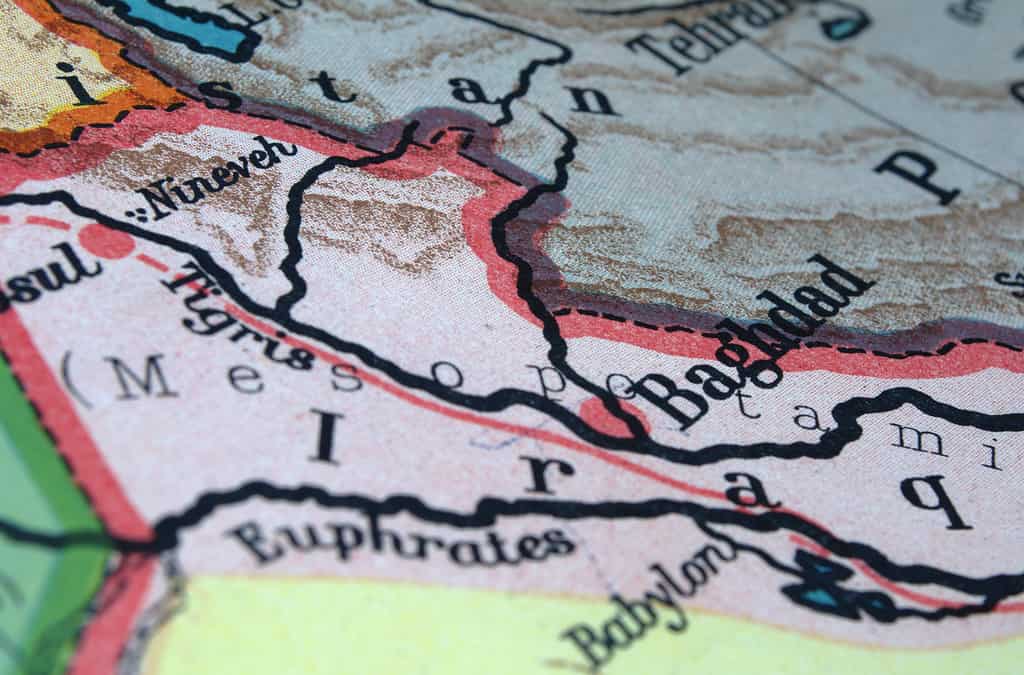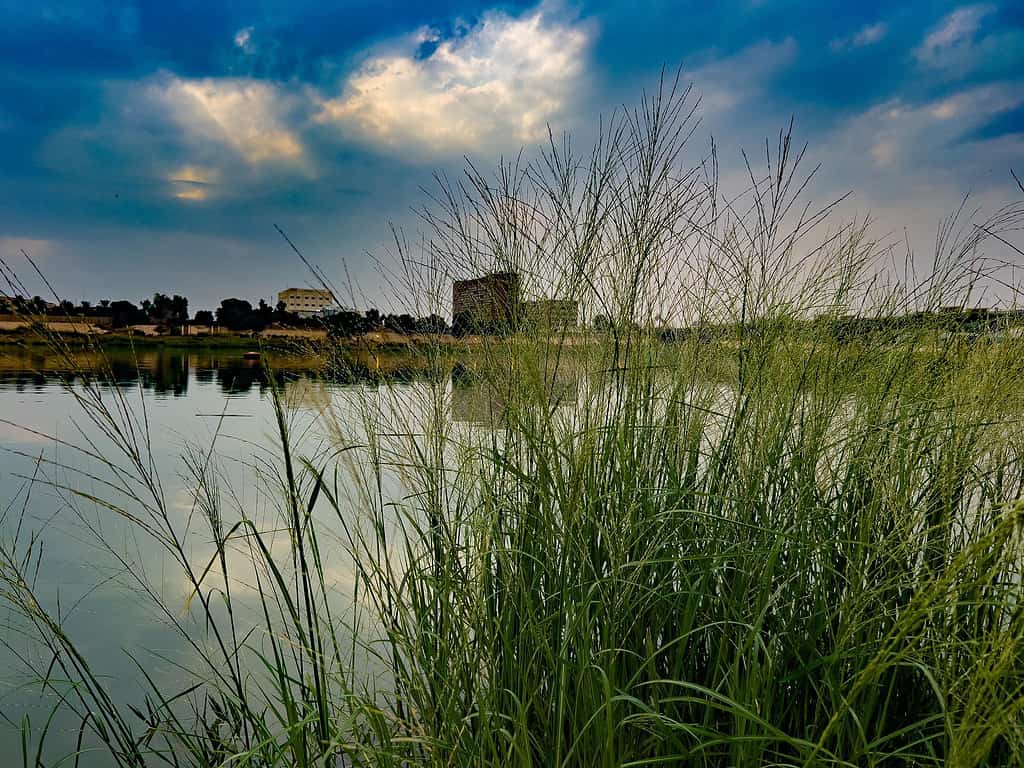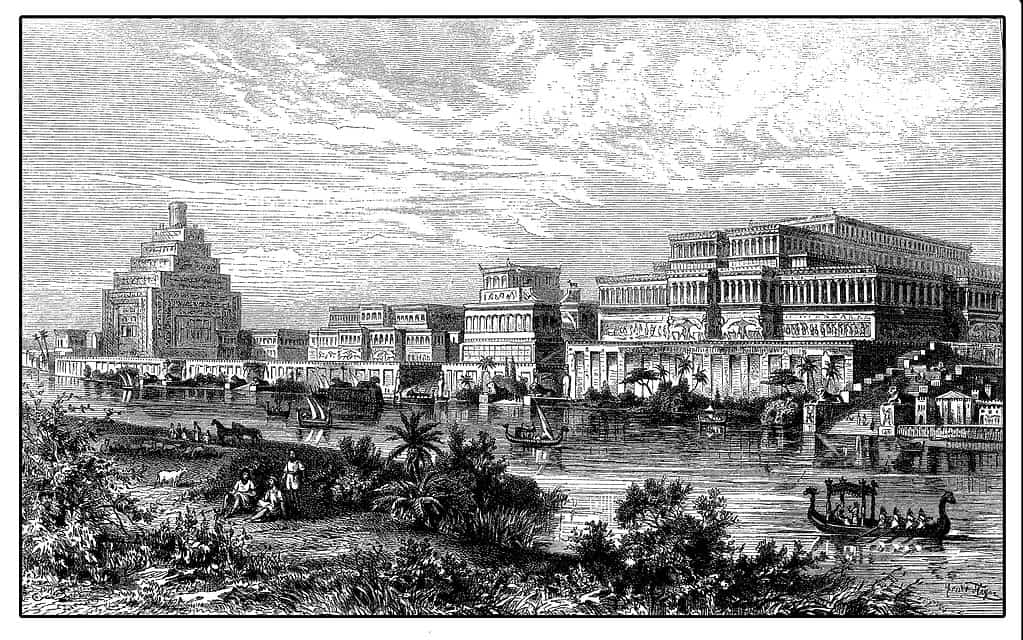
The Tigris River basin is shared by Iraq, Iran, Syria, and Turkey.
©Adil Baran/iStock via Getty Images
The four countries of Iran, Iraq, Turkey, and Syria border the Tigris River, the second largest river in western Asia. Running alongside the Euphrates River, it is part of the Fertile Crescent, a river system that borders Mesopotamia. This river is so culturally relevant that is makes more than one appearance in the Bible. This all-important religious text offers particular insight into the Tigris River, providing symbolic meaning. Let’s dive in and discover what the Bible says about the Tigris River.
Where is the Tigris River Located?

This map from the 1920s shows the Tigris and Euphrates Rivers running parallel to each other.
©MatthewBrosseau/iStock via Getty Images
As mentioned above, the Tigris River is located in western Asia. This area was once Mesopotamia. The Tigris River originates from Lake Hazer, which is located in Turkey. The region is shaped by the Taurus and Zagros Mountains. The Tigris River flows parallel to the Euphrates River, before the two rivers eventually meet and connect with the Persian Gulf. This ancient river has origins discussed in the Bible’s first book, Genesis.
Finding the Tigris River in the Bible

You can find mention of the Tigris River in two books of the Bible.
©iStock.com/NathanMerrill
The Tigris River is mentioned in two passages in the Bible: Genesis 2:14 and Daniel 10:4. Other parts of the Bible loosely describe the Tigris River. However, it is not specifically named outside of Genesis and Daniel. For example, in Deuteronomy, the text implies the Euphrates River is part of the Tigris River, but it doesn’t mention it by name.
In the Beginning
The Tigris River is first mentioned in Genesis 2:14 (NIV) in regard to the Garden of Eden. The Tigris River is one of the four rivers flowing out of Eden. The passage states, “The name of the third river is the Tigris; it runs along the east side of Ashur; And the fourth river is the Euphrates.” In this context, it is clear that the Tigris River is one of the world’s ancient rivers. It is near Ashur, which is an ancient city in present-day Iraq. The first book of the Bible positions the Tigris River as a historical and cultural symbol of civilization.
Prophecies and the Tigris River
The book of Daniel mentions the Tigris River for a second time. Located in the Old Testament, this Book holds many prophetic visions. Daniel 10:4-5 (NIV) reads, “On the twenty-fourth day of the first month, as I was standing on the bank of the great river, the Tigris, I looked up and there before me was a man dressed in linen, with a belt of fine gold from Uphaz around his waist.” This prophetic moment emphasizes the spiritual and symbolic nature of the Tigris River. It is a place where the earth intermingles with the divine.
The Historical Relevance of the Tigris River

The Tigris plays a pivotal role for countries such as Iraq and Turkey.
©rana kareem/iStock via Getty Images
Although the Tigris River only has two explicit mentions in the Bible, the river played an important role in the development of Christianity, Judaism, and Islam. Even now, the river is the backdrop to struggles surrounding politics, religion, and culture. It plays a pivotal role for countries such as Iraq and Turkey. In particular, the Bible sets up the Tigris River as an important geographical feature.
Symbolic Meaning of the Tigris

The Assyrian Royal Palace was reconstructed at Nineveh on the border of the Tigris River.
©Luisa Vallon Fumi/iStock via Getty Images
As the Bible often references water and baptism, it is easy to see the Tigris as a spiritual site. The Bible’s water imagery represents the spiritual elements specific to the Christian faith. The Bible’s references to the Tigris River establish it as a place of history, prophetic vision, and divine hope. It’s not simply a geographical place, but rather a symbol of spirituality and the Christian tradition.
The photo featured at the top of this post is © Inna Giliarova/Shutterstock.com
Thank you for reading! Have some feedback for us? Contact the AZ Animals editorial team.






